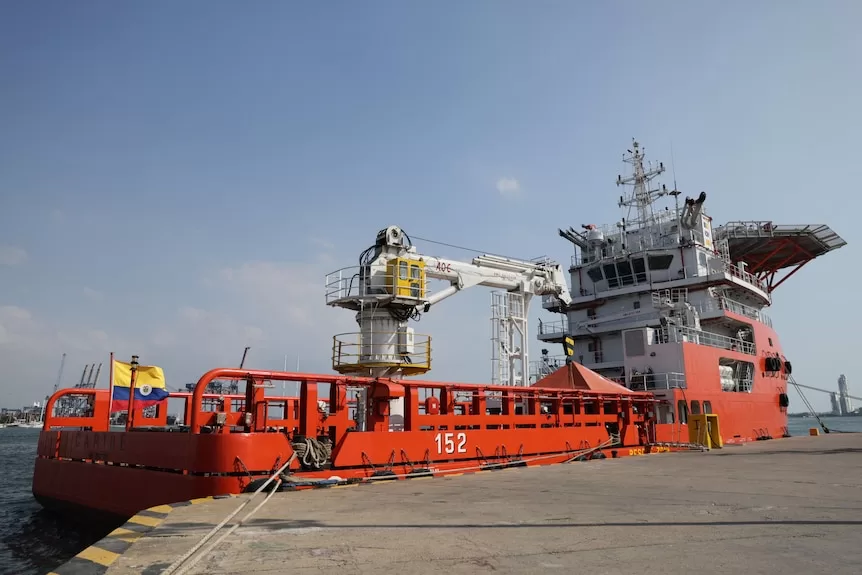- In short: The Colombian government is launching an expedition to recover the bounty of the San Jose shipwreck.
- An underwater robot will be sent to the site of the sunken Spanish galleon to recover some of its treasure.
- What’s next? The underwater robot will start removing items from the shipwreck in May.
Colombia’s government has announced an expedition to remove items of “incalculable value” from the wreck of the legendary San Jose galleon, which sank in 1708 while laden with gold, silver and emeralds.
The country’s Culture Minister Juan David Correa said seven years after the discovery of the wreck off Colombia’s coast, an underwater robot would be sent to recover some of its bounty, estimated to be worth billions of dollars.
Between April and May, the robot would extract items from the outside of the galleon to see “how they materialise when they come out [of the water] and to understand what we can do” to recover the rest of the treasures, Mr Correa said.
The operation will cost more than $US4.5 million ($6.9 million) and the robot will work at a depth of 600 metres to remove items such as ceramics, pieces of wood and shells “without modifying or damaging the wreck”, Mr Correa said aboard a large naval ship.
After three centuries underwater, most items on board have undergone “physical and chemical” changes and could disintegrate when pulled out of the water, navy researcher Captain Alexandra Chadid said.
The location of the expedition is being kept secret to protect what is considered one of the greatest archaeological finds in history from malicious treasure hunters.
The San Jose galleon was owned by the Spanish crown when it was sunk by the British navy near Cartagena in 1708. Only a handful of its 600-strong crew survived.
The ship had been heading back from the New World to the court of King Philip V of Spain, laden with treasures such as chests of emeralds and some 200 tonnes of gold coins.
Before Colombia announced the discovery of the wreck in 2015, it was long sought after by adventurers.
Who gets the loot?
The discovery of the galleon sparked a tug-of-war over who got custody of its bounty.
Spain insisted it should get the bounty was since it was aboard a Spanish ship, while Bolivia’s Qhara Qhara nation said it should get the treasures as the Spanish forced the community’s people to mine the precious metals.
Colombia’s government, led by President Gustavo Petro, wants to use the country’s own resources to recover the wreck and ensure it retains it.
The idea is “to stop considering that we are dealing with a treasure that we have to fight for as if we were in colonial times, with the pirates who disputed these territories”, he added.
Spain’s ambassador to Colombia, Joaquin de Aristegui, said he had instructions to offer Colombia a “bilateral agreement” on the protection of the wreck.
Bolivia’s Indigenous people have expressed their willingness to work with Mr Petro’s government and have now asked for the return of only a few pieces from the ship.
“Not only for the symbolic issue but more for the spiritual issue,” native leader Samuel Flores told AFP.
“We just want our ancestors to be at peace.”
The expedition to start recovering the shipwreck’s trove comes as a case is underway at the United Nations’ Permanent Court of Arbitration between Colombia and the US-based salvage company Sea Search Armada — which claims it found the wreck first more than 40 years ago.
The company is demanding $US10 billion, which is half the wreck’s current estimated value.
AFP
